#chinese rice glutinous balls
Explore tagged Tumblr posts
Text

Savory Tang Yuan (Chinese Glutinous Rice Balls) for Winter Solstice!
#tang yuan#glutinous rice balls#savory tang yuan#tong yoon#winter solstice#dongzhi#dongzhi festival#happy dongzhi#chinese rice glutinous balls#chinese food#chinese cuisine#toisan#recipes#chinese dishes#food#sikfan kitchen#foodies#food blog#food pic#cooking
5 notes
·
View notes
Text
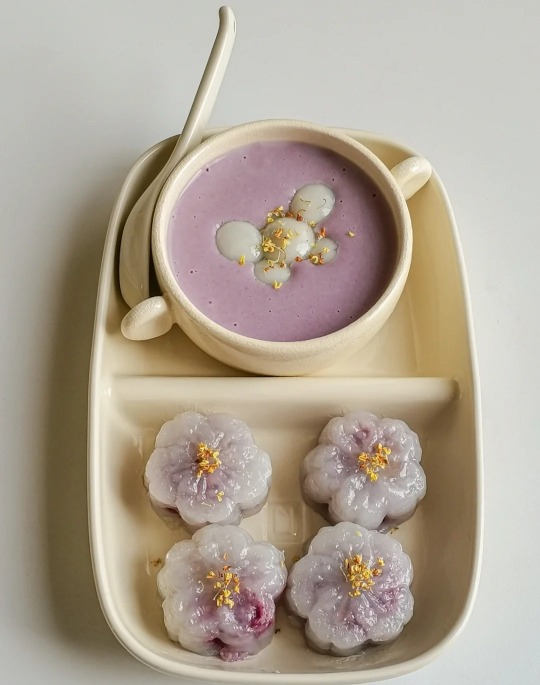

#food#chinese food#chinese sweet#chinese dessert#mooncakes#taro porridge#tang yuan#steamed glutinous rice#glutinous rice dumpling#sticky rice ball
3K notes
·
View notes
Text
Sending you and your loved ones a very beautiful and blessed Winter Solstice (Dongzhi Festival) with warm rays of sun which will soon bring the season of spring.
忙碌的是生活,离别的是距离,问候的是祝福,期待的是团聚,思念的是情谊,想到的是心意,冬至节日悄悄,温暖慢慢送到,烦恼越来越少,幸福一生。冬至快乐 !
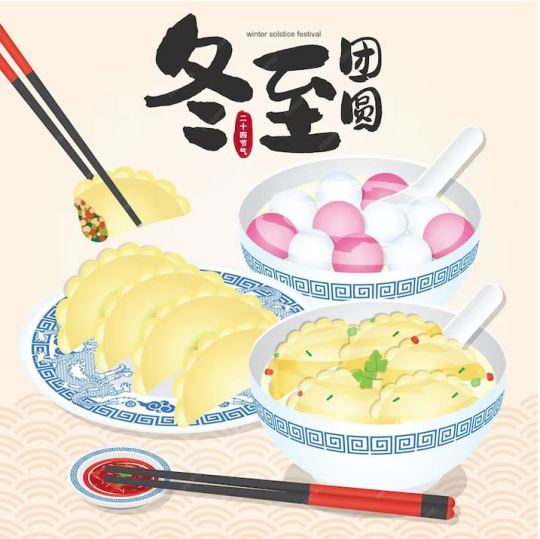
Dongzhi (冬至) literally means “Winter's Arrival”. It is one of the 24 solar terms of China's traditional solar calendar. It has long been celebrated on Winter Solstice when the night is longest and the day is shortest in the Northern Hemisphere. The main Chinese Winter Solstice traditions are worshipping the Heaven and ancestors. Dumplings and Glutinous Rice Balls (汤圆) are popular food eaten during the celebration of the festival in China and many parts of the world.

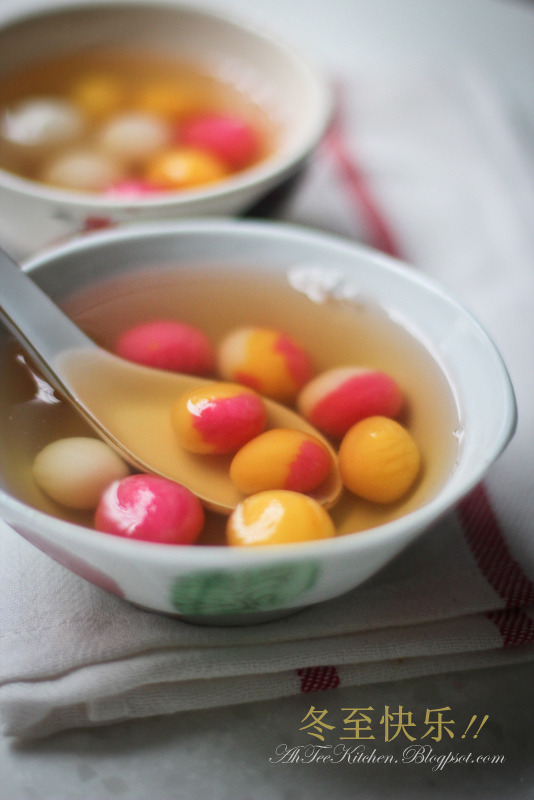
youtube
#Winter Solstice#Dongzhi#冬至#Festival#Tang Yuan#汤圆#Glutinous Rice Ball#Dumpling#Sweet Soup#糖水#Colourful#Chinese Culture#Tradition#Celebration#Recipe#Video#Youtube#Dessert#Snack#Food#Buffetlicious
45 notes
·
View notes
Photo





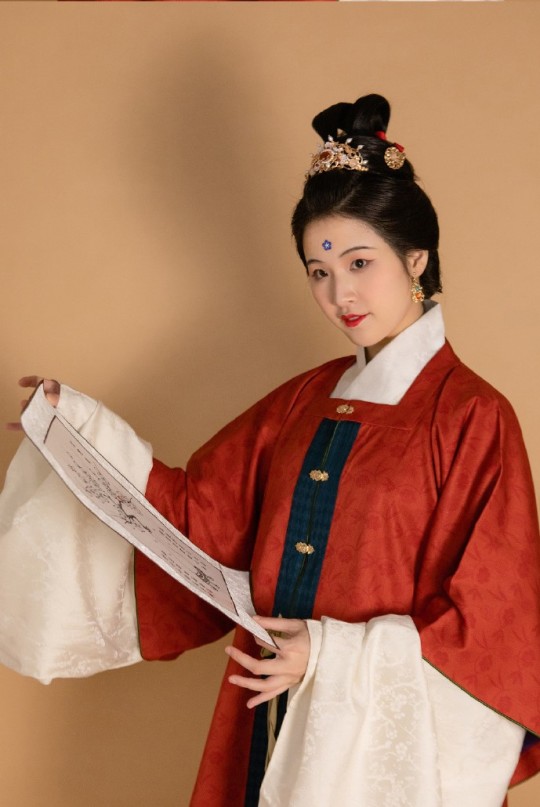
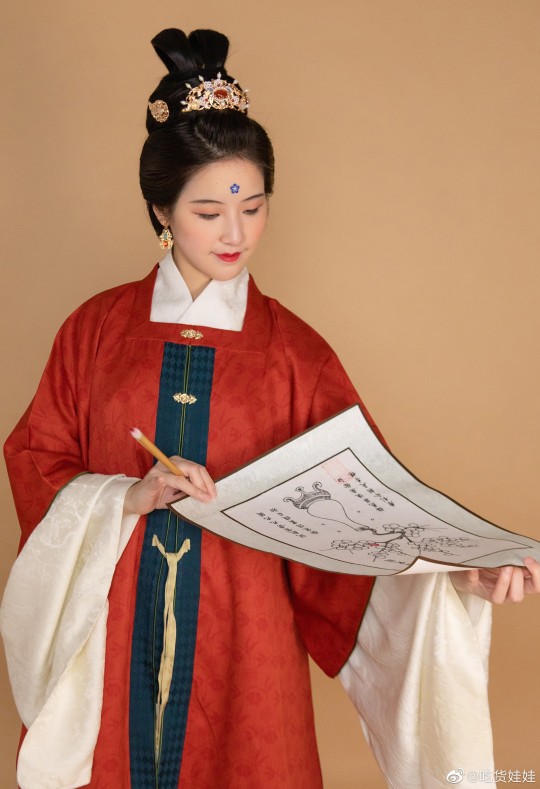
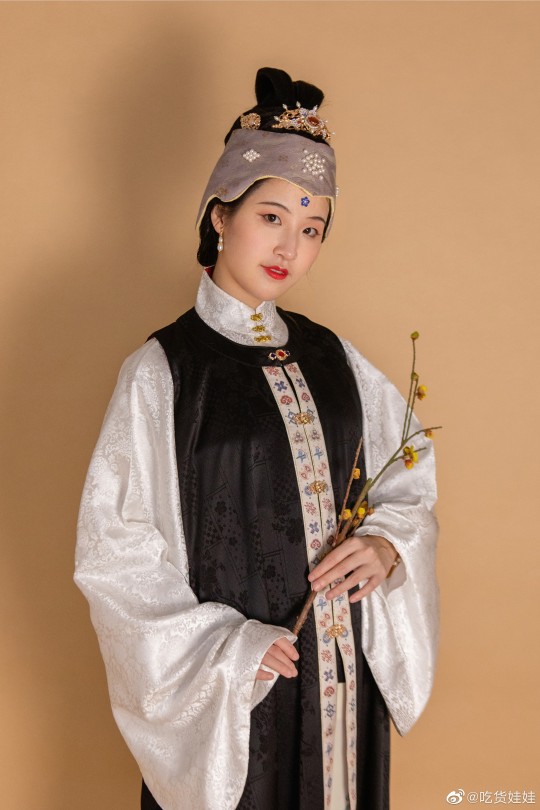


Winter solstice


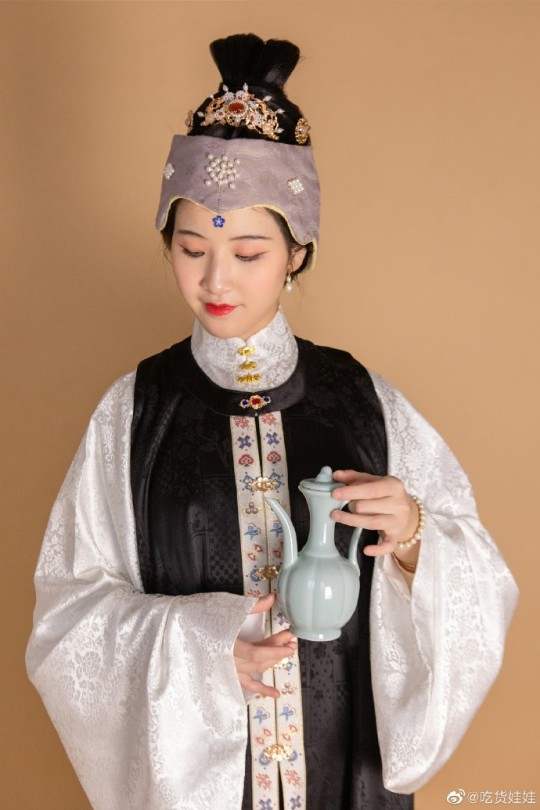

【Historical Reference Artifacts】:

[Hanfu · 漢服]Chinese Ming Dynasty (1368-1644 AD) Traditional Clothing Hanfu Based On Ming Dynasty Relics & Paintings【 冬至 数九消寒 亚岁迎祥 】
————————
The overall is the style of the Jiajing Emperor(1522-1566 AD) to Wanli Emperor(1573-1620 AD) period, woman fashion.
————————
【冬至/Winter solstice】
It is the 22nd solar term in China's 24 solar terms(二十四节气) and one of the eight astronomical solar terms.
Solar terms originated in China, then spread to Korea, Vietnam, and Japan, countries in the East Asian cultural sphere. Although each term was named based on the seasonal changes of climate in the North China Plain, peoples living in the different climates still use it without changes.
This is exhibited by the fact that traditional Chinese characters for most of the solar terms are identical.On December 1, 2016, the solar terms were listed by UNESCO as an Intangible Cultural Heritage of China.
冬至 is also a traditional ancestor worship festival in China. It is regarded as a big festival in winter. There is a saying in ancient folk that "the winter solstice is as big(important) as the new year". The customs of the 冬至 vary in content or details due to different regions.
Traditional Custom Including:
“画九/Huajiu ”
The so-called Huajiu is actually a diagram for calculating the date of warm spring after the 冬至/winter solstice. The Ming Dynasty's "Emperor Beijing Scenery/帝京景物略" contains: "On the day of the 冬至/winter solstice, draw a plain plum with eighty-one petals,dye a petal every day, when you dye all the petals, the spring is coming." The "Nine-Nine Cold Dispelling Map/九九消寒图" has three schemas, which are characters, circles, and plum blossoms.
Making Rice Wine/酿米酒
The traditional Gusu(Now:Suzhou) family will making rice wine on the night of the 冬至/Winter solstice.The Glutinous rice or yellow rice is used for brewing wine in winter, and sweet-scented osmanthus is added for brewing
【What do people eat on 冬至(Winter solstice?】
汤圆(Tangyuan)/Glutinous rice balls
Eating Glutinous rice balls is a traditional custom of the 冬至/Winter solstice, especially in the south of the Jiangnan. "Tangyuan" is a must-have food for the 冬至/Winter solstice. " 圆 Yuan" means "reunion 团圆 " and "completeness 圆满 ". There is a folk saying that "you will be one year older after eating glutinous rice balls".
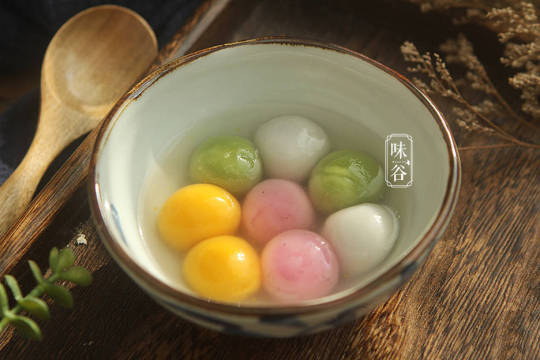
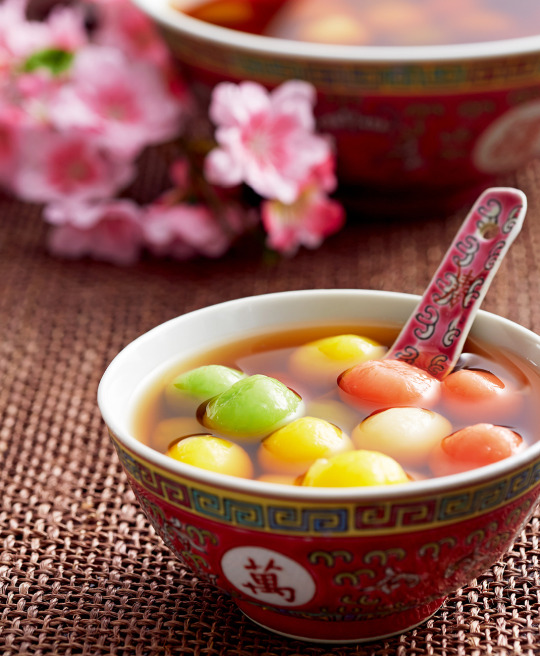
Dumplings(饺子)
In many parts of northern China, there is a custom of eating dumplings on the winter solstice every year. In the northern part of China, dumplings are eaten on this day because dumplings have the meaning of "eliminating the cold". There is still a folk proverb that "if you don't serve the dumpling bowl on the winter solstice, your ears will freeze and no one will care about you".

羊肉汤/Mutton Soup
Every winter solstice, people in Chengdu, Sichuan like to eat mutton soup.

_______
Recreation Work :@吃货娃娃
🔗Weibo:https://weibo.com/1868003212/MkJA10yrw
_______
#Chinese Hanfu#Ming Dynasty (1368-1644 AD)#Hanfu#冬至/Winter solstice#24 solar terms(二十四节气)#画九/Huajiu#Making Rice Wine/酿米酒#汤圆(Tangyuan)/Glutinous rice balls#Dumplings(饺子)#羊肉汤/Mutton Soup#hanfu history#hanfu accessories#Chinese Culture#chinese traditional clothing#china#chinese#Chinese Costume#chinese style#吃货娃娃#漢服#汉服#chinese food#Chinese custom
209 notes
·
View notes
Text

Eating Tang-Yuan together🍙🍴❤
65 notes
·
View notes
Text

Tang Yuan / Wedang Ronde / Sweet Glutinous Balls Desserts (Vegan & Naturally Colored)
#vegan#sweets#desserts#chinese cuisine#winter#tang yuan#rice balls#glutinous rice flour#turmeric#matcha#beet powder#cacao#broths#ginger#pandan#wedang ronde#indonesian cuisine#dongzhi
31 notes
·
View notes
Text

【南瓜西米露汤圆 | Pumpkin and Sago Dumplings or ”Glutinous Rice Balls” 】
自制汤圆,冬至节必吃的传统甜品,味道糯唧唧,香甜Q弹,吃了很有饱腹感。
Homemade and Sticky glutinous rice balls, a traditional dessert that must be eaten during the Winter Solstice. It tastes glutinous and sweet, and it feels full after eating.
_____________________________________________________________________
【食材| Ingredients】
南瓜 Pumpkin 半个 Half cut
西米 Sago 适量 Moderate amount
牛奶 Milk 适量 Moderate amount
蜂蜜 Honey 适量 Moderate amount
糯米粉 Glutinous rice flour 适量 Moderate amount
班兰叶 Pandan leaves 适量 Moderate amount
糖 Sugar 适量 Moderate amount
______________________________________________________________________
【准备南瓜西米的部分|Preparation Pumpkin and Sago Part】
1. 将南瓜去皮,然后切成小块蒸熟。 Peel the pumpkin, then cut it into small pieces and steam it.
2. 把锅里煮至沸腾,把水烧开后倒入西米用小火开始煮,边煮边搅拌以免糊锅。 After the water comes to a boil, then pour in the sago and start cooking on low heat, stirring while cooking to avoid it become mushy.
3. 煮到西米中间有一个白点后就可以关火了。 Cook until there is a white spot in the middle of the sago and turn off the heat when done.
4. 关火后焖五分钟让西米中间没有白点就可以了。 Turn off the heat and simmer for five minutes so that the middle of the sago is not white spots can be.
5. 将西米捞出来后,用凉水降温,在用滤网筛里沥干水分备用。 The sago will be fished out, cooled down with cool water, in a drainage net to drain the water spare.
6. 将班兰叶烫过,然后把斑斓叶搅成湖,过后过滤出斑斓汁备用 Scald the pandan leaves, and then stir the glistening leaves into the lake, after filtering out the glistening juice spare
7. 接下来,将蒸熟的南瓜块,适量的斑斓汁,���适量的牛奶倒进搅拌 Next, pour the steamed pumpkin pieces, the right amount of glistening juice, and the right amount of milk into the mixing cup.
8.开始搅拌,把南瓜混合物搅拌成糊糊备用 Start stirring, stir the pumpkin mixture into a paste and set aside
_____________________________________________________________________
【准备汤圆的部分|Preparation Rice Balls Part】
1. 把糯米粉加水揉匀。 Knead the glutinous rice flour with water well.
2. 取出适量,捏一捏,再揉圆。 Take out an appropriate amount, pinch it, and then knead it round.
3. 然后,捞起来备用。 Then, fish up and set aside.
________________________________________________________________________
【汤圆混合的部分|Rice Balls Mixtures Part】
1.把西米和南瓜糊混合在一起,加适量蜂蜜和糖搅拌均匀。 Mix the sago and pumpkin paste together, add the right amount of honey and sugar and mix well.
2.然后, 放入已煮熟的汤圆一起搅拌。就可以开吃啦! Then, add the cooked dumplings and mix together. Ready to eat!
________________________________________________________________________
汤圆的故事之一 Story of Tangyuan
冬至节的故事由来 Origin of Winter Solstice
________________________________________________________________________
记得多多支持和关注哟! Don't forget to: 按赞 Like 订阅 Subscribe 关注 Follow 分享 Share
youtube
#汤圆#冬至#南瓜汤圆#冬至汤圆#西米露汤圆#sago dumplings glutinous rice ball#dumpling rice ball#南瓜西米露汤圆#pumpkin and sago dumplings#冬至甜品#南瓜西米露#pumpkin dessert winter solstice#南瓜甜品#西米露甜品#汤圆制作#汤圆甜品#汤圆零失败#汤圆简单制作#冬至必备甜品#chinese winter solstice#chinese dessert#chinese pumpkin dessert#华人南瓜甜品#chinese sago dessert#dumplings recipes#sago recipes#rice ball recipes#汤圆煮法#汤圆吃法#汤圆口味
10 notes
·
View notes
Text
tangyuan in sesame flavor but alien by 热锅上的大白菜
(chinese cuisine, boiled balls of glutinous rice flour stuffed with sweet or savoury filling)

#china#food#xhs#douyin#lmao#alien tangyuan#alien#alien food#feed Xenomorphs this so they don't eat people#funny
213 notes
·
View notes
Text
Chinese Desserts
There's quite a large variety of treats and desserts in China (more than you can imagine), so here are some of the most common ones!
Almond jelly/tofu - 杏仁豆腐 - xìngréndòufu Despite the name, almond jelly doesn't actually have almonds in it. Almond jelly is made from gelatin and almond milk, although some recepies use dairy milk instead.
Glutinous rice balls - 汤圆 - tāngyuán These rice balls are made from glutinous rice balls with a sweet filling, such as red bean paste (a pretty popular filling in desserts, I've been fooled more than once when purchasing what I assumed to be a chocolate filled pastry).
Red bean buns - 豆沙包 - dòushābāo One of my favorite desserts so far. These are steamed buns with a sweet red bean paste filling that I'd definitely recommend.
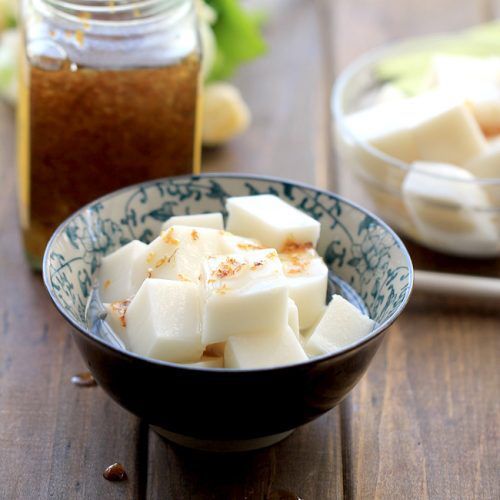
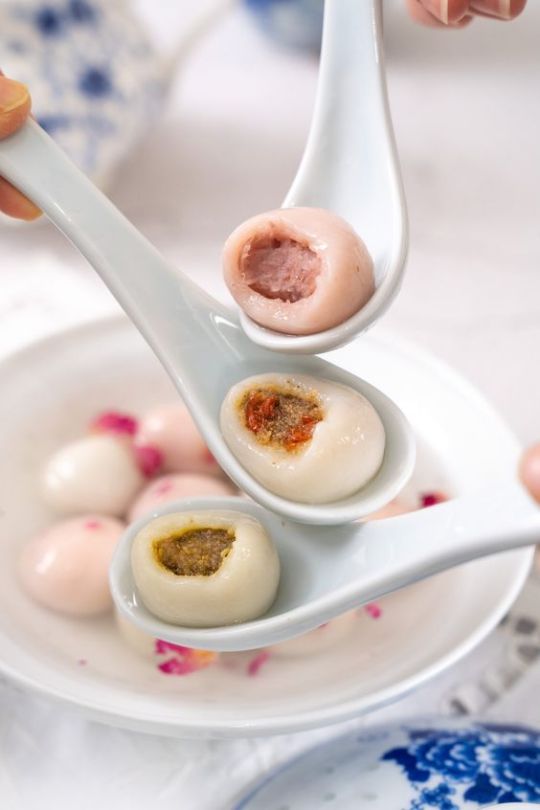
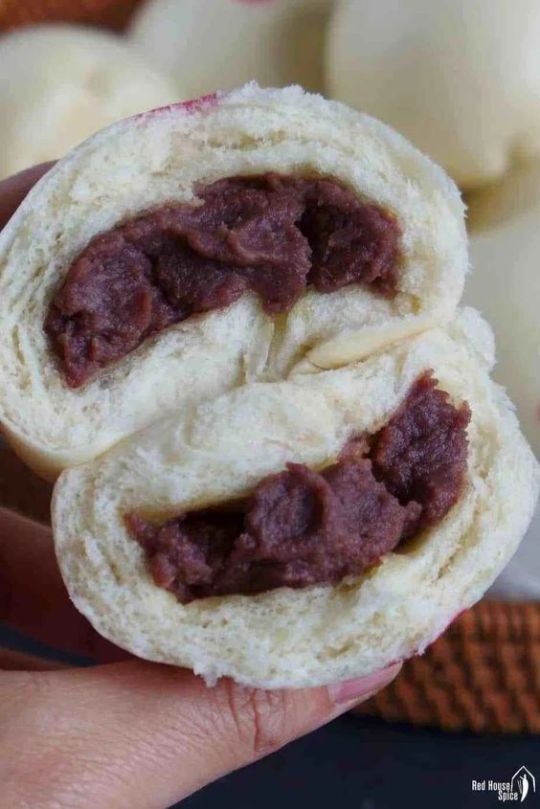
Egg custard bun - 流沙包 - liúshābāo A sweet and savory bun, with a lava-like egg yolk filling. A pretty interesting dessert, as it's both sweet and savory.
Pumpkin cake - 南瓜饼 - nánguābǐng I haven't tried this yet, but it definitely looks good. A fried and crunchy cake with a sweet filling such as red bean paste.
Eight treasure rice pudding - 八宝饭 -bābǎofàn This is a pretty popular dessert, especially during the Lunar New Year. It gets this name becase of the toppings, which are eight or more different types of dried fruits and nuts arranged on top of the sweet rice, with (once again) red bean paste.
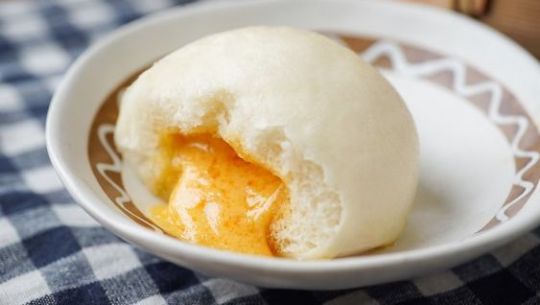
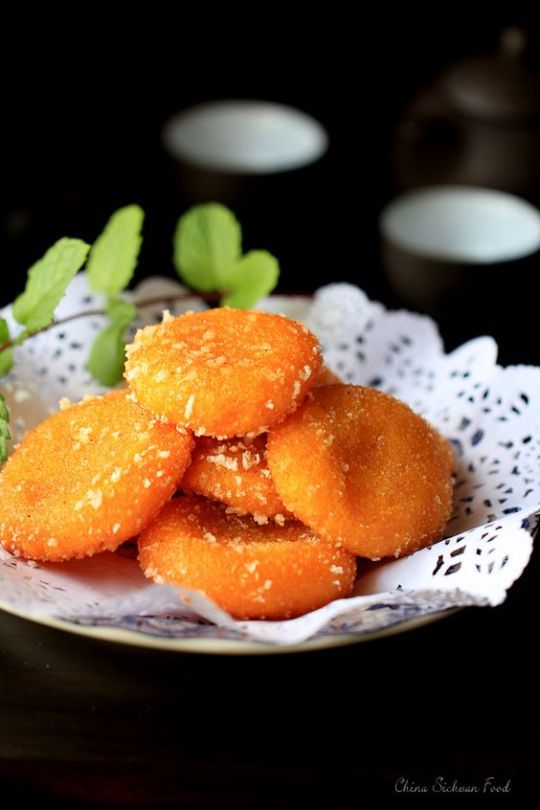
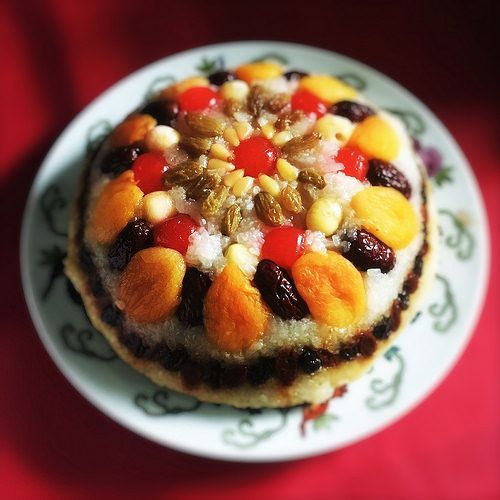
Hawthorn stick/ Candied Haws/ Sugar coated haws/ Bingtanghulu - 冰糖葫芦 - bīngtánghúlu This treat has quite a few translations and you may have probably already seen it. This is basically candied fruit covered with a sweet, crunchy and sugary syrup. Traditionally, Hawthorn is used but other fruits such as grapes, strawberries and oranges are also popular options.
Sachima - 沙琪玛 - shāqímǎ I haven't tried this snack yet, but it looks quite fascinating. Sachima is made from fried batter stuck together with a sugary syrup, with an interesting texture.
Sesame balls - 芝麻球 - zhīmaqiú Similar to the rice glutinous balls, this treat is also made from glutinous rice flour with varying fillings including lotus seeds, mung bean and red beans, and sesame seeds.
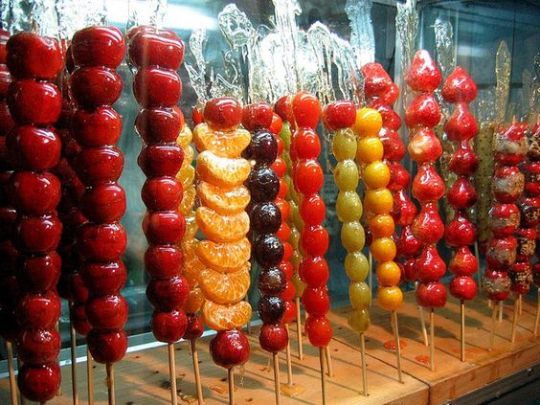
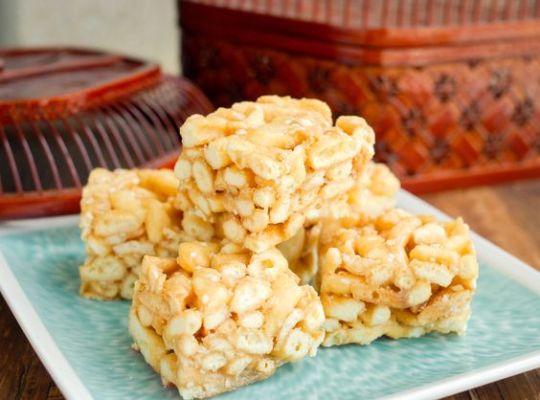
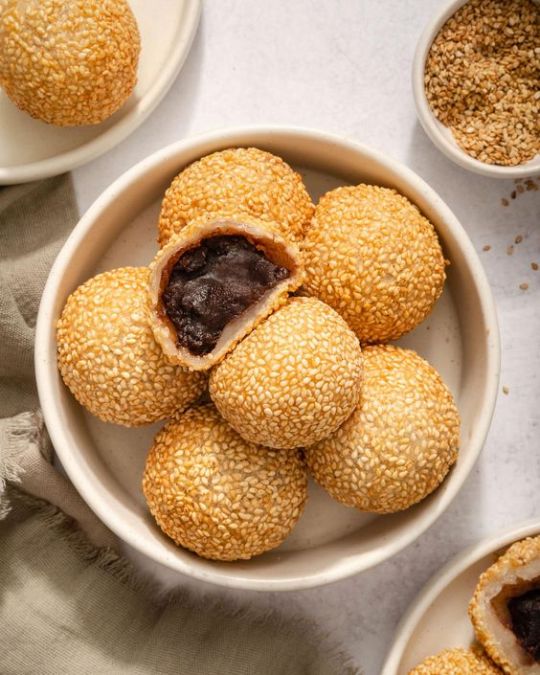
Water chestnut cake A sweet pan-fried cake made from chinese water chestnut, with a unique semi-transparent appearance.
Wintermelon puff/ Wife cake/ Sweetheartcake - 老婆餅 - lǎopóbǐng This cake has many names, mainly because it has several different origin stories, each more fascinating than the next. This dessert is a flaky pastry with wintermelon, almond (not red bean this time!) paste and sesame filling.
Fortune cake - 发糕 - fāgāo Not a fortune cookie! This is a spongy steamed cupcake cake commonly made for the New Lunar Year celebrations and occasionally other events. They're usually a white-ish or brown-ish color, but they're often dyed bright colors to add extra festivity.
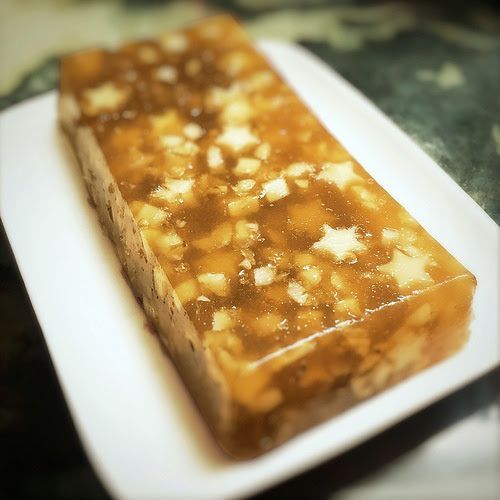
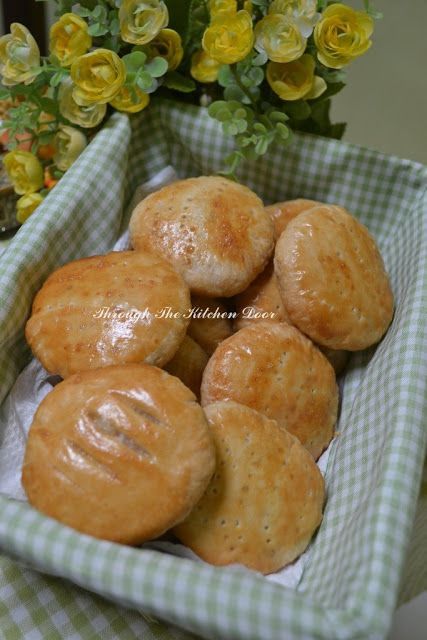
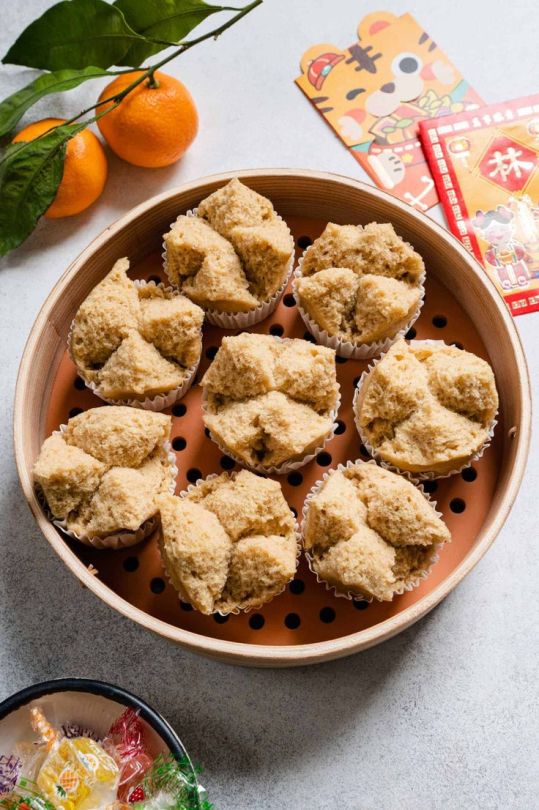
Mooncake - 月饼 - yuèbǐng This is a pretty well-known dessert, commonly prepared for the Mid-Autumn Festival. Mooncakes are smallish steamd/fried (depends on the region) cakes with a sweet filling that can also sometimes have an egg yolk inside.
Osmanthus cake - 桂花糕 - guìhuāgāo This is a unique traditional pastry made from glutinous rice flour, honey and osmanthus. This cake has a really interesting texture, as it's quite dense but also airy in a way? I'd definitely recommend trying it, as it's not super sweet and goes really well with tea.


#chinese food#studyblr#college life#student life#study blog#life in china#aesthetic#student#study motivation#travel blog#china#study in china#college#slavic roots western mind#asia#chinese#asian food#baozi#bao#cuisine#food#foodpics#red bean bun#red bean paste#almond jelly#rice balls#chinese dessert#chinese sweets#asian desserts#asian dessert
246 notes
·
View notes
Text
Info for writer in Thai series fandom: Random food
I added some pictures on AO3 but not here, but I tried searching in English, and it did show the correct item, so if you want to know what it looks like, you can look it up.
Breakfast
Actually, anything can be breakfast, but this is some of what is frequently viewed as breakfast.
Khao Tom (Boiled rice/Rice porridge)
Joke (Rice porridge/Congee)
Tom lueatmu (Pork Blood Soup)
Khaoniao mu ping (Grilled Pork Sticky Rice)
Khaoniao mufoi (Glutinous Rice with Shredded Pork)
Khai kratha (Pan egg)
Namtaohu songkhrueang (soy milk with topping)
Sandwich boran (thai style sandwich)
and everything westerners consider breakfast.
Northern food
Namphriknum (young chili paste)
Namphrik-Ong (Ong Chili Paste)
Khaepmu (Crispy Fried Pork Rinds)
Sai-Ua (a type of sausages)
Kaengho
Kaenghangle (Hung Lay Curry)
Khanomchinnamngiao
Khaosoi
Central food
Nam phrik long ruea
Nam phrik kapi
Homok (steamed fish with curry paste)
Thotman (a type of fish ball)
Pucha (deep-fried crab meat and minced pork in crab shell )
Kaengchuet
Kaengphet
Kaengsom
Khaophat (Fried rice)
Yam
Northeastern food (E-san food)
Soup nomai (bamboo shoot soup)
Tomsom (fish soup with ginger)
Kaeng Om
Kaeng Proe (Bamboo Shoot and Yanang Soup)
Kaeng Het (Mushroom Soup)
Kaeng Khai Motdaeng (Red ant egg soup)
Somtam
Southern food
Kaeng Taipla
Kaengsom
*Kaengsom in the central and southern regions have some differences. Recently, there was even a debate online about whose Kaengsom is superior.
Kaenglueang
Kai Tom Khamin
Khua Kling
Phatsato
Phat Phet Kop
Yam Nam Budu
Nowadays, every part of Thailand eats everything I mention here, but its origin is still very obvious, and the origin can give some impression about what it will taste like for people who try it for the first time.
Popular Foreign food
Chinese food (some kinda Thai-Chinese more than actual Chinese)
Japanese food
Korean food
Mexican food
Indian food
Vietnamese food
Westerner food (Farang food)
Drink
Green Tea
Iced Tea/Thai Tea
Lemon Tea
Cocoa
Nom yen/Nom chomphu (Pink milk)
Oliang
Yok lor
Coffee boran
Butterfly pea juice
Lemongrass and Pandan Juice
Nam daeng (Red drink) (Hale's blue boy sala flavor)
Nam khiao (Green drink) (Hale's blue boy cream soda flavor)
Bubble tea
Chain Restaurants
Sizzler
KFC
McDonald’s
Burger King
Starbucks
Subway
Taco Bell
MK Suki
S&P
Barbecue Plaza
Yum Saap
Fuji restaurants
Katsuya
Yayoi
Ootoya
Chester’s Grill
Pizza Hut
Pizza Company
Narai pizzeria
Hachiban
Mos Burger
Dairy Queen
Swensen
Easy to find dish
There a type of restuarant call ran-ahan tam sang (ร้านอาหารตามสั่ง) (Cooked to order resturant?) which is basically everywhere and this is a basic almost every those restuarant will have.
Rice top with fried basil
Fried rice
Stir Fried Vegetables with Rice
Garlic Pork with Rice
Stir Fried Chili Paste
Suki->Thai Styled Sukiyaki (water/dry)
You can select the type of meat yourself, even if the name includes the word "pork," (it's just a place holder) and you can add extra meat (more of the one you select or something else) or eggs if desired.
Eating utensils
The most common choice are just a spoon and fork. In places like noodle shops, it usually has chopsticks as well. and for steak, a knife.
List of online supermarket site
Index
85 notes
·
View notes
Text
Winter Solstice
A-achoo! How cold! This year winter solstice cold wind is really unforgivable! 🌬️
In this bitter winter, let’s beat the cold with some warm tangyuan!
Tangyuan held in the hands of Little Girl warms both the body and the heart. The super cute puppy tangyuan melts my heart! The hot pot prepared by the Acrobat is so steaming! The Hermit also participate in this warm gathering! (How on earth did he eat it?)
Did all of you have tangyuan today? Let's us share the warm together!

Tangyuan is a traditional Chinese dessert that made from glutinous rice flour that shaped into a ball and served in hot broth or syrup.
#idv#identity v#idv official illustration#idv hermit#alva lorenz#idv acrobat#mike morton#idv little girl#idv memory
27 notes
·
View notes
Text
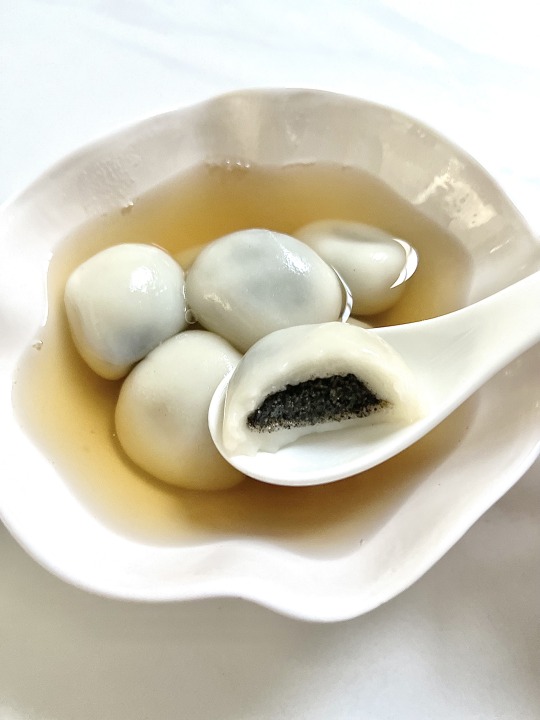
Tang Yuan 汤圆 (Chinese Glutinous Rice Balls) with Black Sesame Filling for #WinterSolstice
#tang yuan#chinese glutinous rice balls#black sesame rice balls#wintersolstice#food blog#food pics#recipes#youtube#sweets#chinese dessert#chinese food#chinese holidays#winter solstice festival#black sesame glutinous rice balls
20 notes
·
View notes
Photo
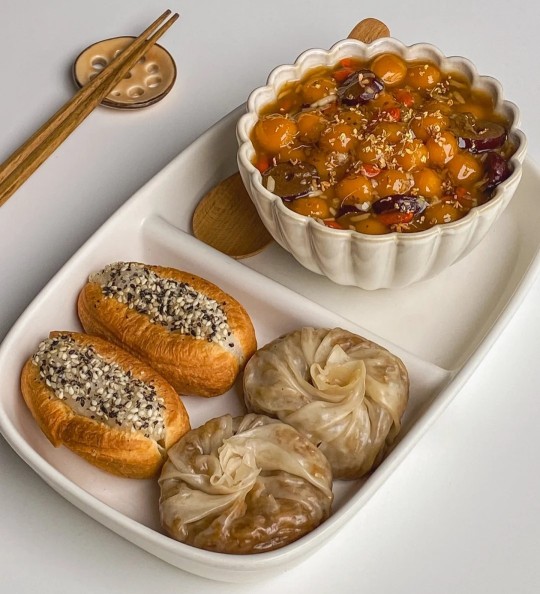

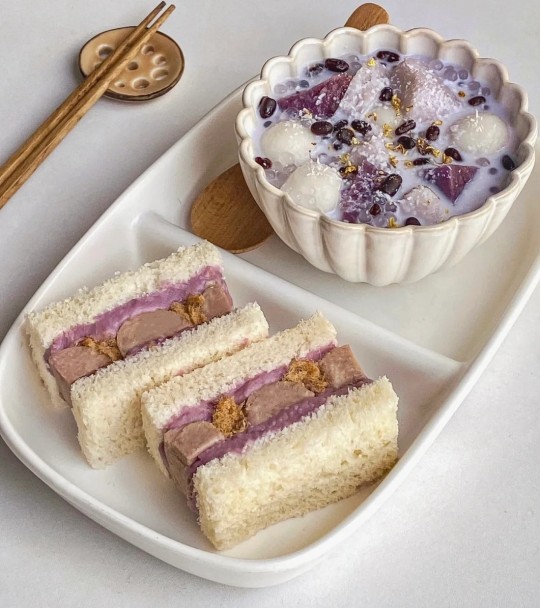
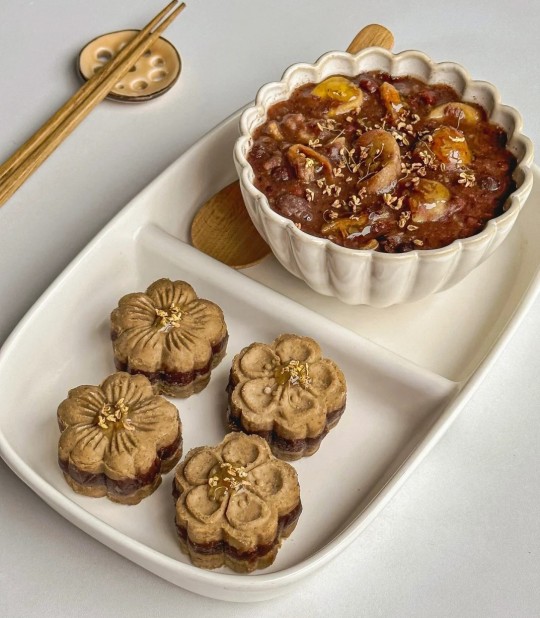
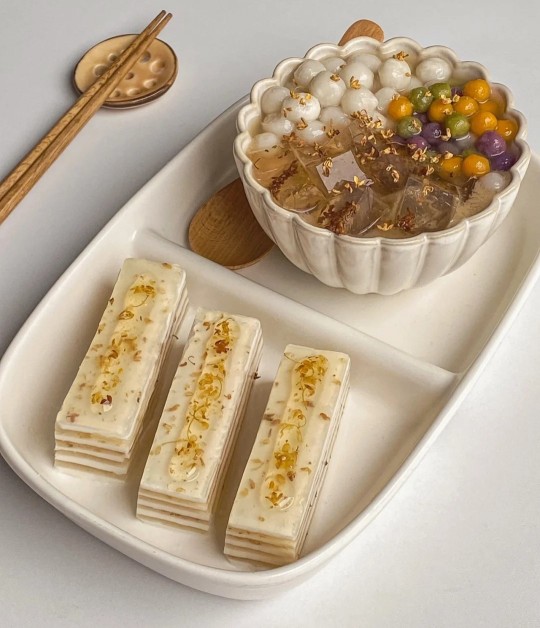

#food#chinese dessert#chinese sweet#chinese food#mochi#taro pudding#glutinous rice dumpling#sticky rice ball#tapioca pearls#boba pearls#red bean porrige#tang yuan#daifuku#wagashi
1K notes
·
View notes
Text
Today is Lantern Festival (元宵节). It falls on the 15th day of the new lunar year, which is February 24th this year. The arrival of this day also marks the final day of the traditional Chinese New Year celebrations.

Eating 元宵 is another important Lantern Festival custom. 元宵 or Tang Yuan (汤圆) is made of glutinous rice. The stuffing includes bean paste, black sesame, peanut, various kinds of fruit and so on. The fillings can be either sweet or savoury, depending on what is wrapped inside.

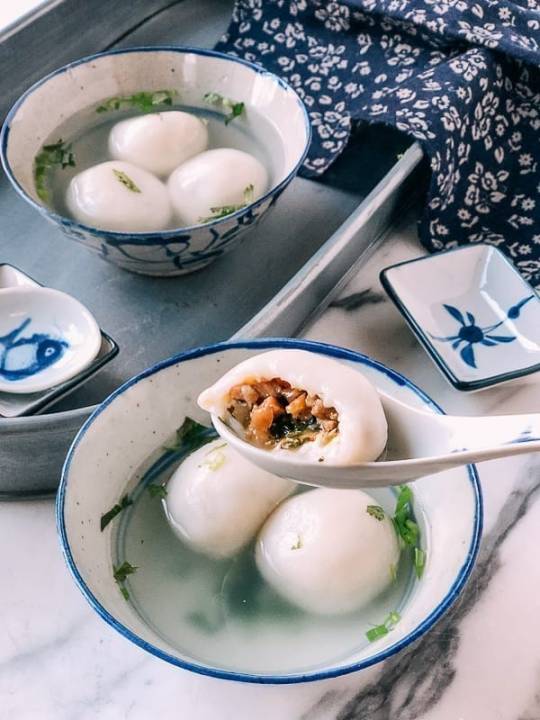
In Chinese, 元 can also mean "first" and 宵 usually refers to "night". So 元宵 literally means the first night that we can see the full moon in the lunar new year. It symbolizes the arrival of spring and the end of the Chinese New Year celebration.

Info from here and tang yuan images from here.
#Lantern Festival#元宵节#Chinese New Year#春节#Lunar New Year#农历新年#2024#正月十五#元宵#Tang Yuan#汤圆#Glutinous Rice Ball#Sweet#Savoury#Sweet Soup#Chinese Custom#Dessert#Food#Buffetlicious
41 notes
·
View notes
Photo

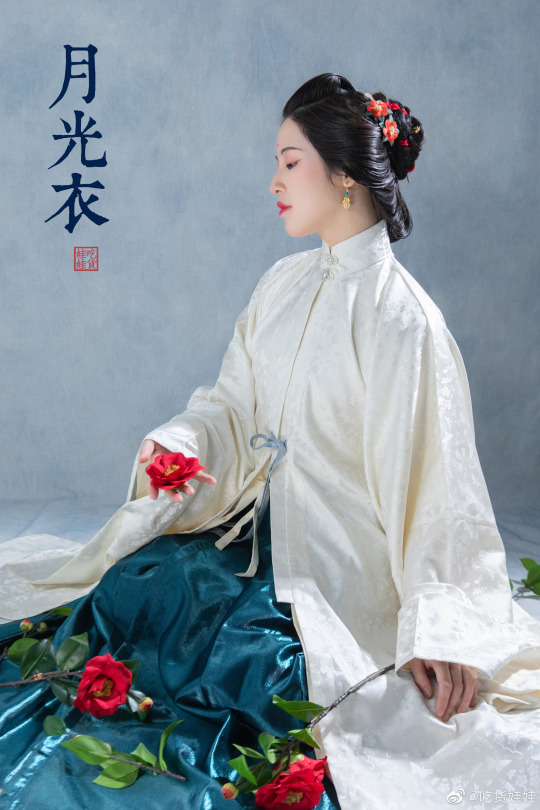

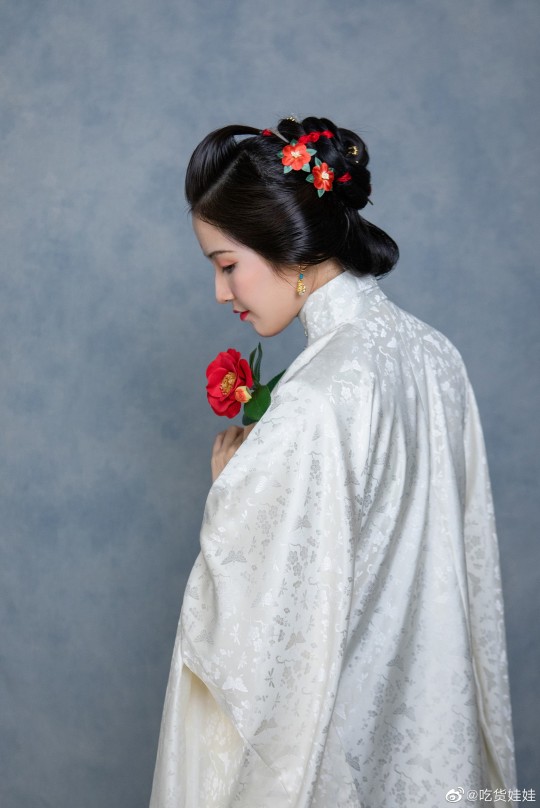
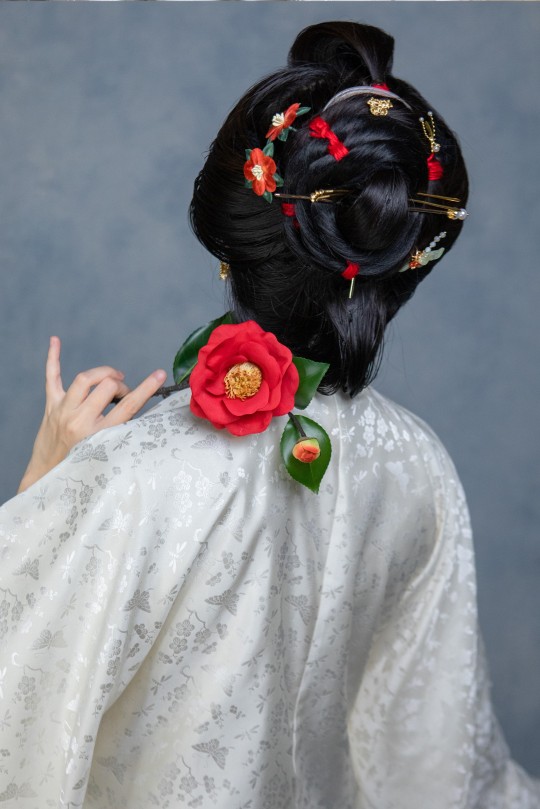
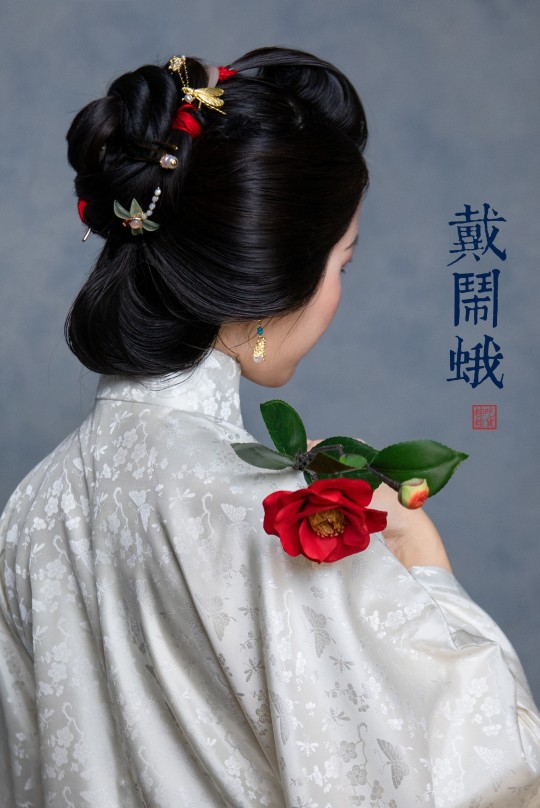
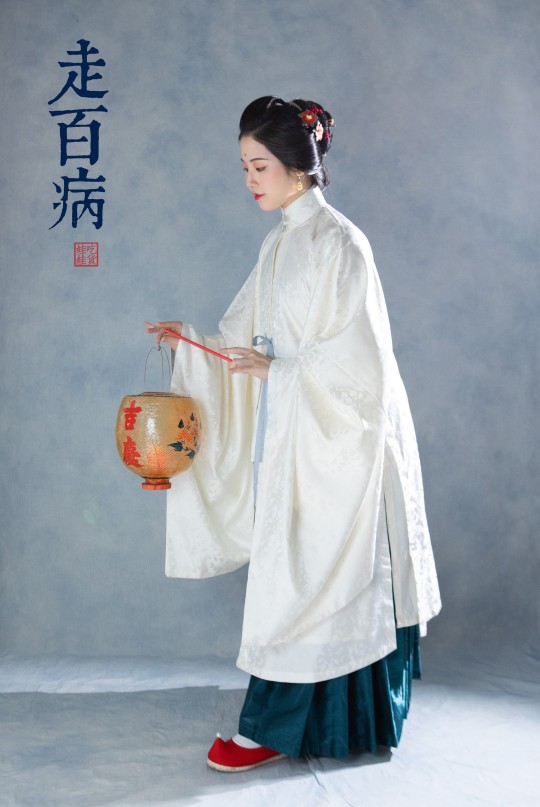



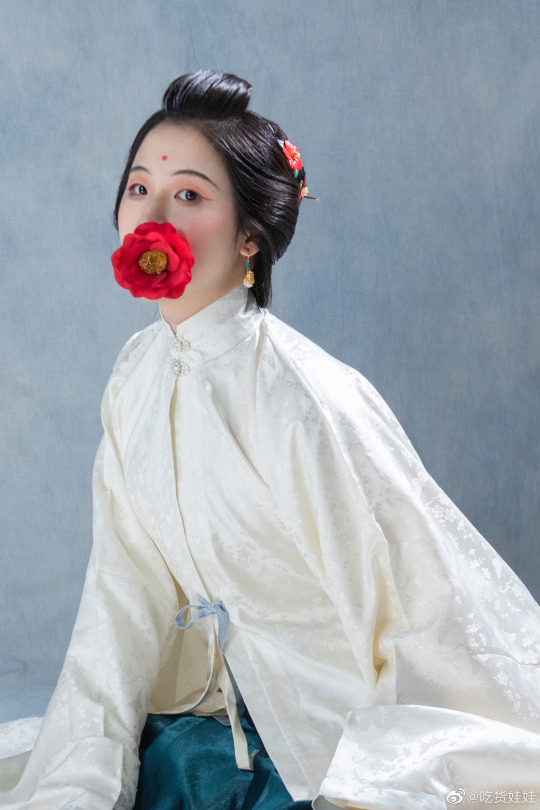

【Historical Artifacts Reference 】:
・Late Ming period woman hairstyle: 三绺头(Sān liǔ tóu )
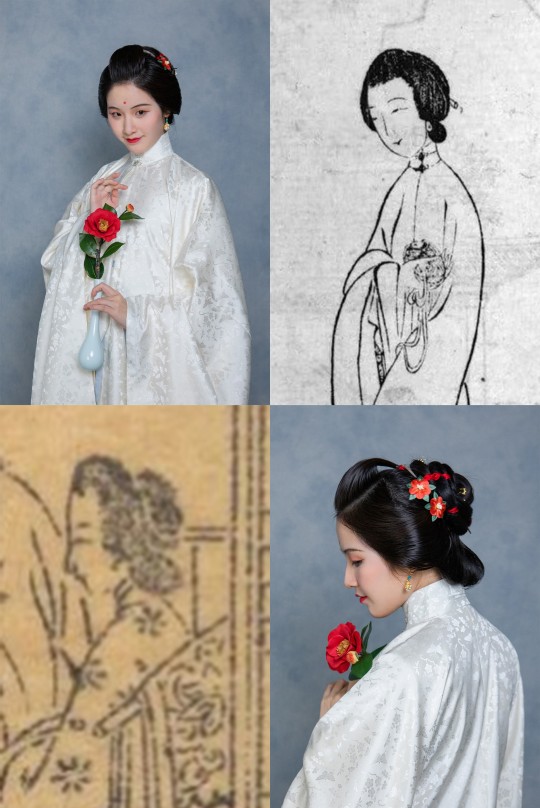
Late Ming to Qing Dynasty woman hood/hat: 风帽( Fēngmào )

[Hanfu · 漢服]Chinese Ming Dynasty (1368-1644 AD) Traditional Clothing Hanfu & Lantern Festival 元宵節
【About Lantern Festival/ Shangyuan Festival (元宵節/上元節)
Today is The Lantern Festival also called Shangyuan Festival (上元節), is a Chinese traditional festival celebrated on the fifteenth day of the first month in the lunisolar Chinese calendar, during the full moon. Usually falling in February or early March on the Gregorian calendar, it marks the final day of the traditional Chinese New Year celebrations.As early as the Western Han Dynasty (206 BC–AD 25), it had become a festival with great significance.
During the Lantern Festival, children go out at night carrying paper lanterns and solve riddles on the lanterns (猜燈謎). In ancient times, the lanterns were fairly simple, and only the emperor and noblemen had large ornate ones.As below Ming Dynasty court paintings【明宪宗元宵行乐图 】:

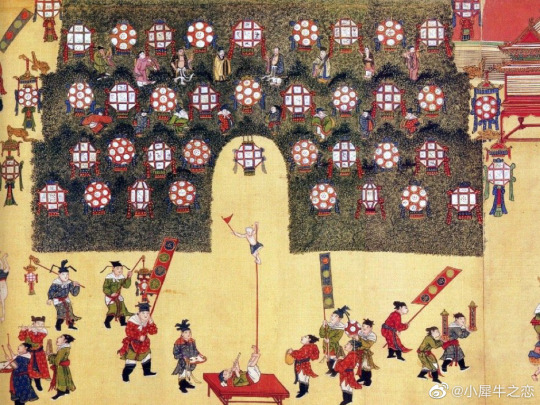
It depicts the lively scenes of watching lanterns, watching operas and setting off firecrackers in the inner court on the Lantern Festival in the 21st year of Chenghua (1485).Among them we can see a lot of large ornate lanterns in this painting
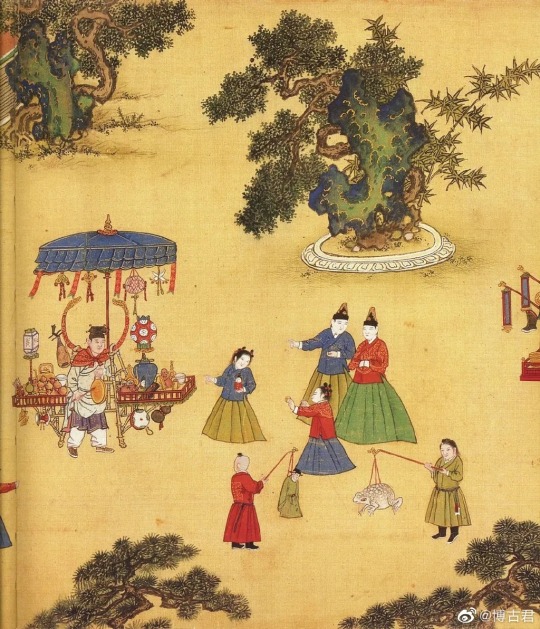


At the same time, we can also see the children in the palace carrying lanterns of various shapes

The painting is very long, and it is a custom painting reflecting the celebration of the Lantern Festival in the court of the Ming Dynasty.
【Customs of Lantern Festival in Ming and Qing Dynasties: 走百病 】
Also known as "游百病You Baibing", "散百病San Baibing", etc., it is a traditional folk culture in the north china since the Ming and Qing Dynasties. Some of them are held on the Lantern Festival, but most of them are held on the next day of the Lantern Festival.
On this day, women dressed in formal costumes, walked out of the house in groups, crossed bridges, climbed the tower over a city gate, and touch the nails on the city gate to pray for hopes of good health and longevity until midnight before going back home. Besides, touch the nails on the city gate it also pray for having child(摸钉求子)."Nail钉" are same pronunciation as Ding丁,It can be associated with the word "人丁Ren Ding": a Chinese word that originally refers to an adult man and later refers to the population.Basically, it is to pray for to have more and more family members in the future(child).

【Customs of Lantern Festival in Ming and Qing Dynasties: 戴闹蛾 】
The so-called“ 闹蛾 Nào é ”is a kind of headgear worn by women in ancient China, with silk or black gold paper in the shape of flowers or insects.It has been popular from Song Dynasty to Qing Dynasty.From some unearthed hair accessories in Ming Dynasty, we can also see a lot of insect-themed hair accessories, such as: 1. 玉叶金蟾头饰,Ming Dynasty:

2. 金镶宝石蜘蛛簪,Ming Dynasty,Collection of Nanjing Museum

3.垒丝镶红蓝宝石蝴蝶形金步摇,Ming Dynasty,Collection of GuamfuMuseum

In addition, eating glutinous rice balls 汤圆 during the Lantern Festival is also a traditional customs in china,the practice and filling of glutinous rice balls in different regions may also be different.
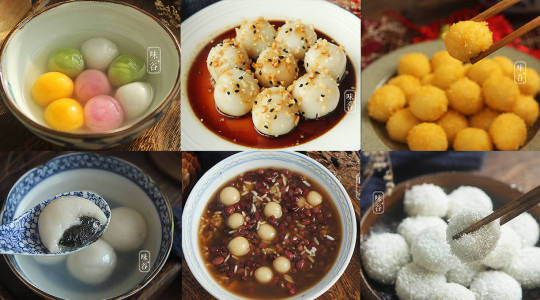
_______
Recreation Work :@吃货娃娃
🔗Weibo:https://weibo.com/1868003212/MrAg3zsiz
_______
#Chinese Hanfu#Ming Dynasty (1368-1644 AD)#hanfu#Lantern Festival/ Shangyuan Festival (元宵節/上元節)#chinese culture#chinese festival#风帽( Fēngmào )#三绺头(Sān liǔ tóu )#chinese food#chinese customs#走百病#明宪宗元宵行乐图#戴闹蛾#hanfu accessories#chinese traditional clothing#chinese#chinese historical hairstyle#Chinese Costume#吃货娃娃#China History
372 notes
·
View notes
Text
nostalgic food
i’ll want to reference this in the future

gỏi cuốn (spring roll with chicken, egg, rice noodle, carrot, lettuce, avocado)
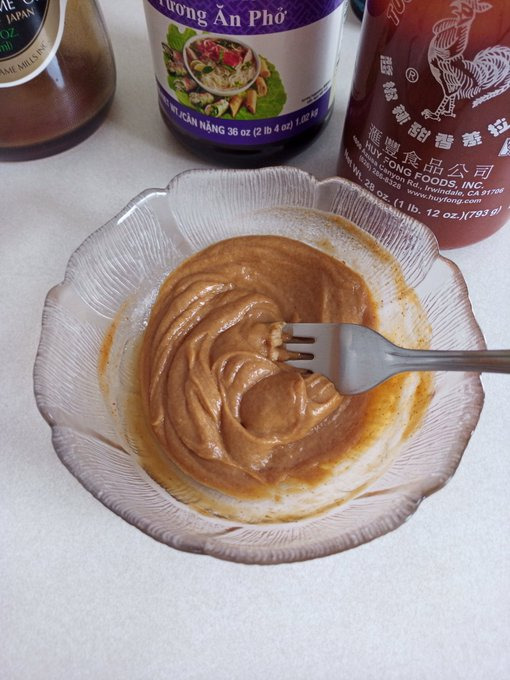
peanut sauce is just peanut butter+water, hoisin+sriracha sauce, and a tiny bit of sesame oil (tastes good with almost anything imo)
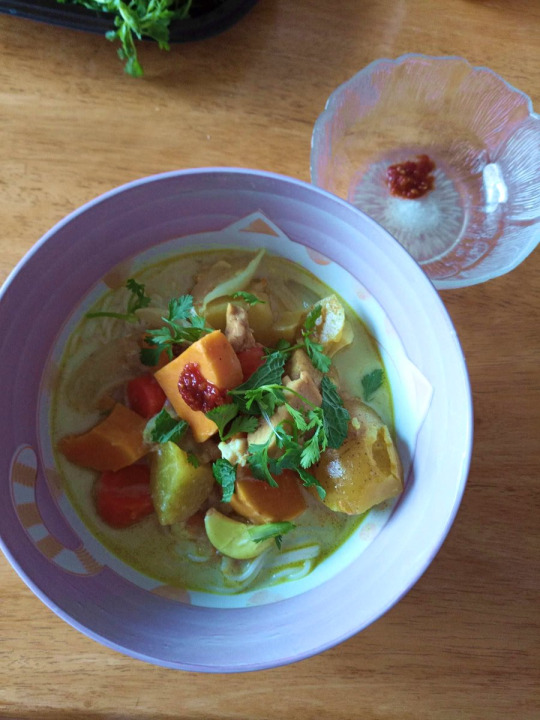
yellow curry
rice noodle with chicken, potatoes, yams, onions, carrots in a creamy coconut milk and yellow curry paste broth
lemon juice and salt mix with garlic chili for dipping

bò kho (vietnamese beef stew)
kho is a cooking technique where a protein is braised in a mixture of fish sauce, sugar, and water or coconut juice to make a salty/savory result
bread dips in stew beef/potatoes dip in lime juice/salt/pepper mix
cucumber slices to offset the salty
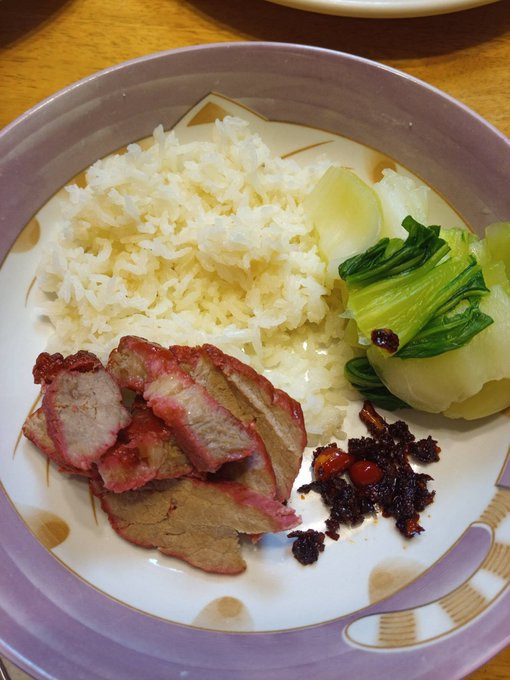
xá xíu (cantonese style bbq pork)
the seasoning mix is made of sugar, powdered soy sauce, onion and garlic powder, and spices
the pink color very much freaked out middle schoolers at lunch

cơm tấm (broken rice, grilled pork, egg, pickled carrots/daikon with scallions/oil garnish and fish sauce)
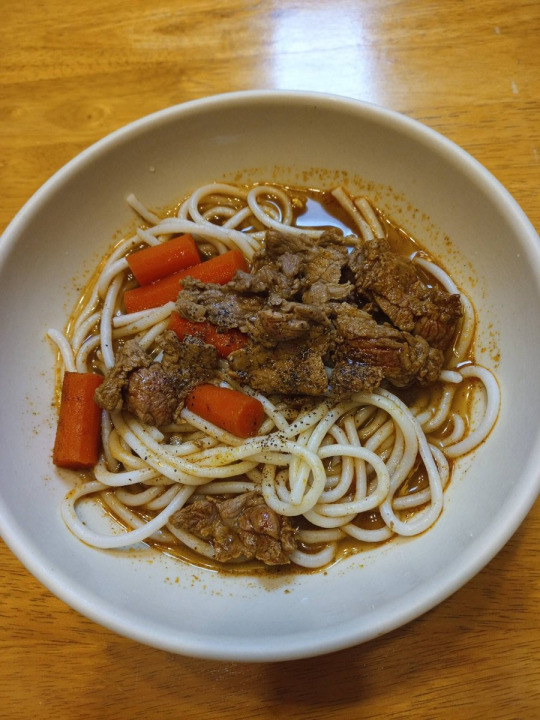
bún bò huế (thick round rice noodle with beef soup)
more "fun" than phở imo
bún bò broth: spicy salty flavor (lemongrass, spicy chili, fermented shrimp paste, fish sauce)
phở broth: earthy sweet flavor (cinnamon, star anise, onion, ginger, garlic, herbs)
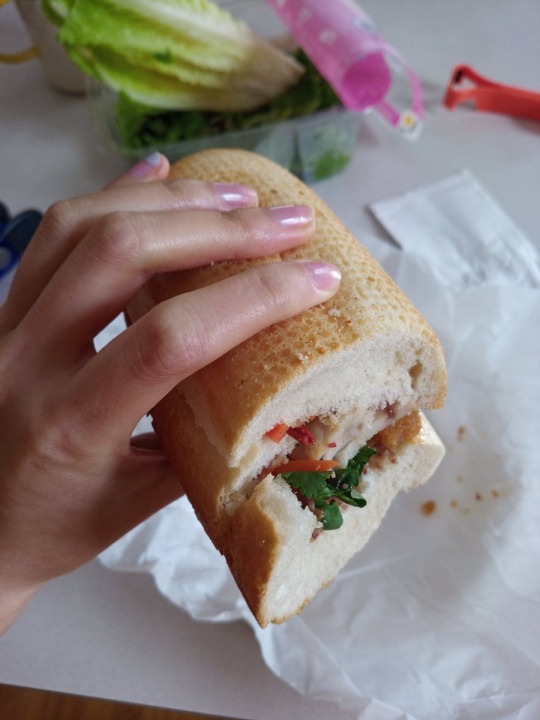
bánh mì (baguette sandwich with chả lụa (pork sausage), xá xíu (cantonese style bbq pork) coriander leaf (cilantro), cucumber, pickled carrots, and pickled daikon combined with pâté and buttery mayonnaise)

salmon instead of nem nướng̣ (viet grilled pork) with bánh hỏi (rice vermicelli)
feat nori (dried edible seaweed)
wrapped with lettuce and dipped in nước mắm (fish sauce)
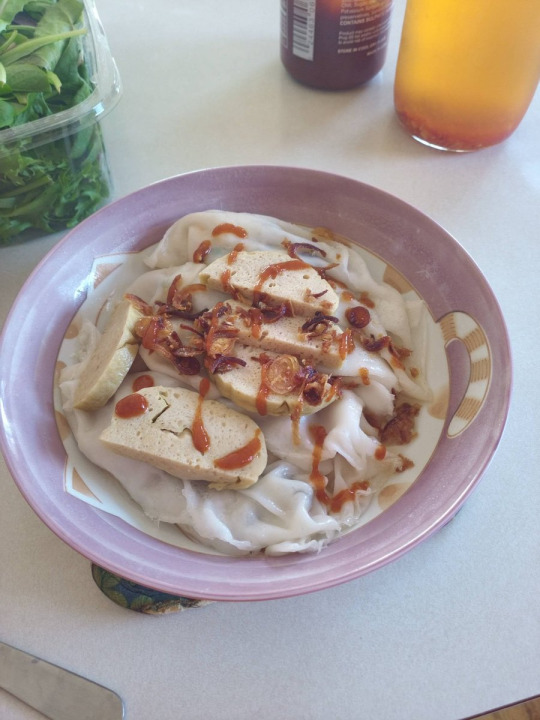
bánh cuốn (rice noodle rolls filled with ground meat, wood ear mushrooms, onions)
topped with chả lụa (pork sausage) and fried red onions and nước mắm (fermented salted fish sauce)
a fav of grandpa's
pizza man mispronounces it as "bun goo" which makes my mom giggle cause the way he says goo sounds like penis

bánh tét (glutinous rice rolled in a banana leaf into a thick, log-like cylindrical shape, with a mung bean and pork filling)
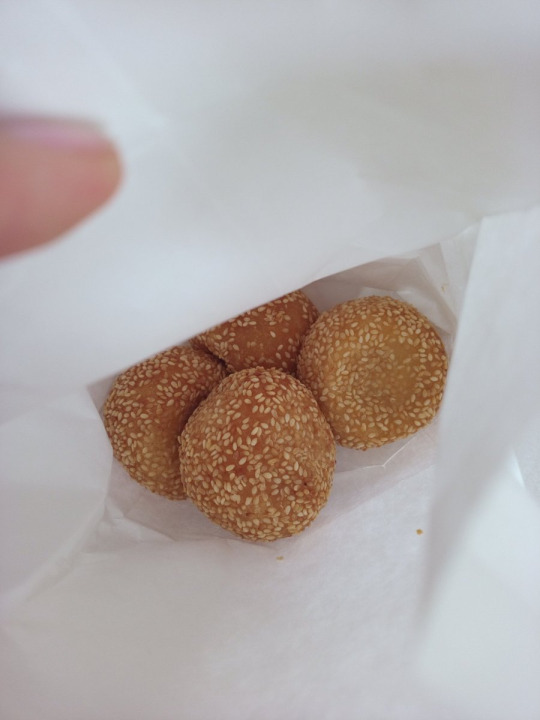
bánh rán (deep fried sesame ball filled with mung bean)
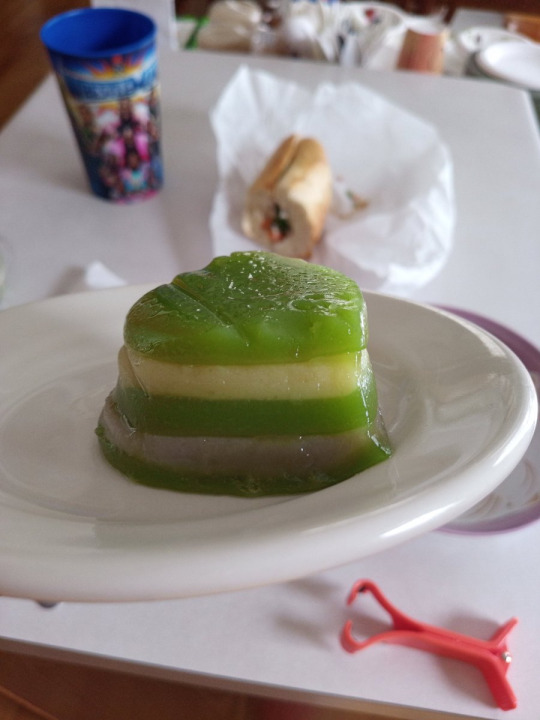
bánh da lợn "pig skin cake" (tapioca starch, rice flour, mung bean, taro, coconut milk)
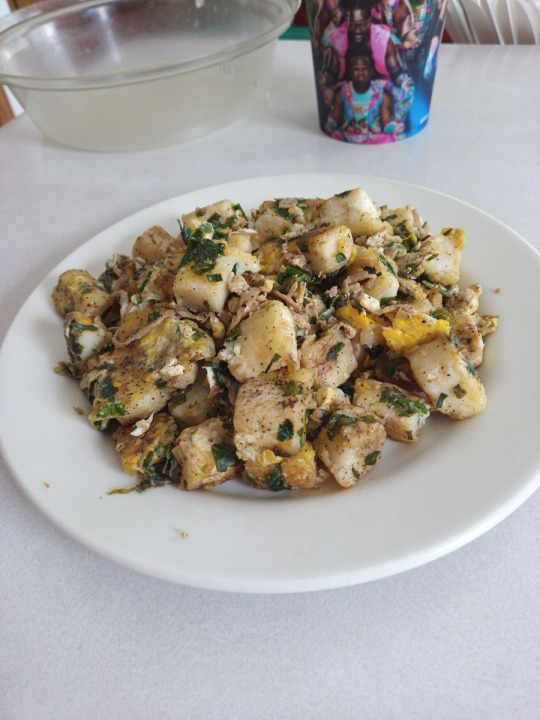
bánh bột chiên (fried taro rice cake, a fav of pizza man)

phở (broth: earthy sweet flavor- cinnamon, star anise, onion, ginger, garlic, herbs)
ive called phở mid but while eating this i was like huh this is good actually then my dad says this time he simmered chicken bones for hours like he's supposed to instead of using canned broth
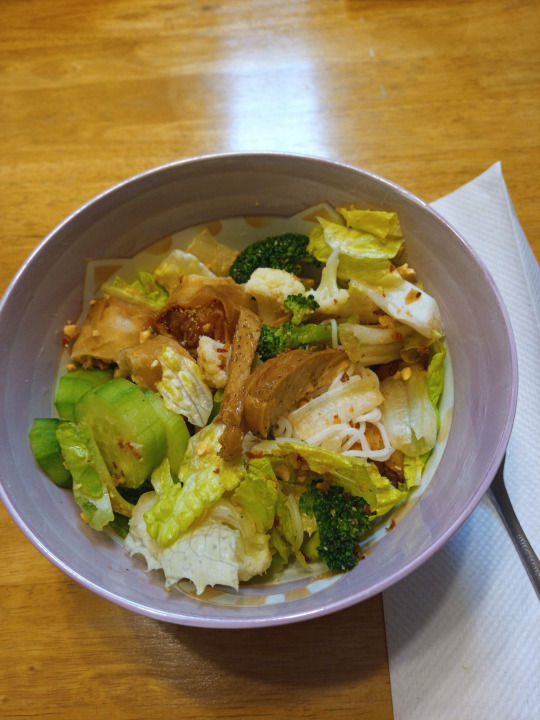
improvised bún thịt nướng (rice noodle bowl with chopped grilled pork, egg roll, veggies, crushed peanuts, fish sauce)
a way to deal with leftover noodles from gỏi cuốn
every time i eat this i think of the time me and pizza man were in new orleans and he asked if i wanted to eat at a viet place and i was surprised cause he's not really into a lot of viet food but anyway i got bún thịt nướng

thịt kho (pork with eggs braised in sticky savory caramel of sugar, fish sauce, coconut water)
i have distinct flashbacks of being in the middle school cafeteria with my thịt kho and kids around me going "what is that??", "ewwww" lol
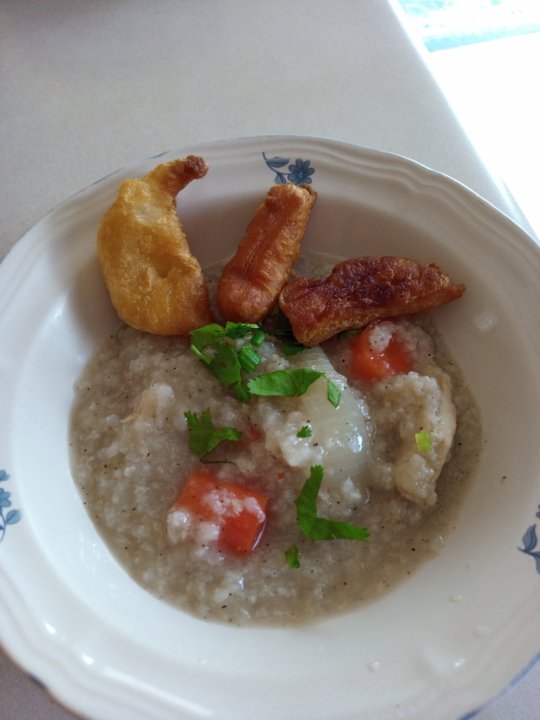
cháo (rice porridge with chicken or a white meat fish- often served with crunchy cabbage salad)
my dad likes it with youtiao (chinese donuts)
being sick means eating this! but we also eat it a lot when we’re not sick!
when my mom was young she would say yes to any dude that asked her out and order an obscene amount of food/the most expensive things on the menu and never hear from them again but my dad took her to a cháo place cause that was his favorite but apparently for cheapskates
he proposed two weeks later and she said yes
my mom is such a menace i wanna be just like her
70 notes
·
View notes